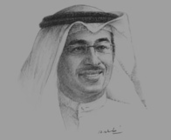OBG talks to Mohamed Alabbar, Chairman, Emaar

Interview: Mohamed Alabbar
To what extent has Dubai adopted a more conservative and fiscally responsible approach in terms of funding its expansion since the global crisis?
MOHAMED ALABBAR: Dubai has an open and internationally integrated economy. As such, like many other economies the emirate was affected by the global financial crisis. However, Dubai has proven to be strong and resilient, and by focusing on key drivers – such as trade, tourism and logistics – the economy grew by 3.4% in 2011. This was slightly lower than the UAE national economy, which posted growth of 4.9%, according to the IMF, and is poised for continued expansion in 2012.
It is important to note that, in Dubai, some state-owned and government-related enterprises that were in need of being restructured have been reorganised successfully, but this has not necessarily been across the board. For example, only two out of the more than 40 companies in the entire Investment Corporation of Dubai portfolio were involved in a restructuring process.
Today, the high level of demand for bond offerings from Dubai – from both the global and regional financial markets – demonstrates the level of international investor confidence in the city. That speaks very clearly of Dubai’s fiscally responsible approach to funding its future long-term growth.
How do you respond to those that question the need for iconic structures like Burj Khalifa, claiming that their costs are not justified?
ALABBAR: Burj Khalifa is part of the $20bn Downtown Dubai development, Emaar’s flagship project that is described as “the centre of now.” The economic impact of developments such as Downtown Dubai, and Burj Khalifa in particular, has proved invaluable to driving the growth of the city in the short to medium term.
Downtown Dubai is indeed a dynamic environment that supports a variety of important sectors of our economy, including retail, tourism, hospitality, commercial business and property. In addition to contributing to the local culture of Dubai and the wider UAE, the value that Downtown Dubai and Burj Khalifa bring to the city, and to the emirate as a whole, is demonstrated by the strong performance of all these sectors. There is also high demand for residential and commercial units in Burj Khalifa, especially in the secondary market, and third-party analysts have recently reported the consistent demand for units in the tower.
On the retail side, Downtown Dubai’s mall developments – The Dubai Mall and Souk Al Bahar – are today regarded as vibrant lifestyle destinations. The Dubai Mall is a fully fledged shopping, leisure and tourist attraction that records quarter-on-quarter increase in footfall, having already hosted more than 44.5m visitors in the first nine months of 2012. Emaar is currently seeking to add further value to the development with the impending Dubai Modern Art Museum and Opera House District, announced recently by Sheikh Mohammed bin Rashid Al Maktoum, vice-president and prime minister of the UAE and Ruler of Dubai.
How can Dubai further position itself to capitalise on the commodities trading triangle linking resource-rich Africa with the emerging economies of the subcontinent and Asia?
ALABBAR: With 10% of the globe’s oil reserves, 40% of its gold, and 80-90% of its chromium and platinum, Africa is rich in natural resources. Further, up to 11 African countries, especially in southern and western Africa, currently rank among the top 10 international sources for at least one major mineral.
Africa’s collective GDP is now roughly equal to Brazil’s, and the continent is one of the most rapidly growing economic regions worldwide. However, despite its rich mineral and human resources, the opportunities that abound in the continent are not being effectively tapped.
Dubai, due to its strategic geographic location and modern infrastructure, is already playing a key role in the “golden triangle” between resource-rich Africa and resource-hungry developing countries, and it is certainly in our interest to monitor progress on the continent.
You have reached the limit of premium articles you can view for free.
Choose from the options below to purchase print or digital editions of our Reports. You can also purchase a website subscription giving you unlimited access to all of our Reports online for 12 months.
If you have already purchased this Report or have a website subscription, please login to continue.

